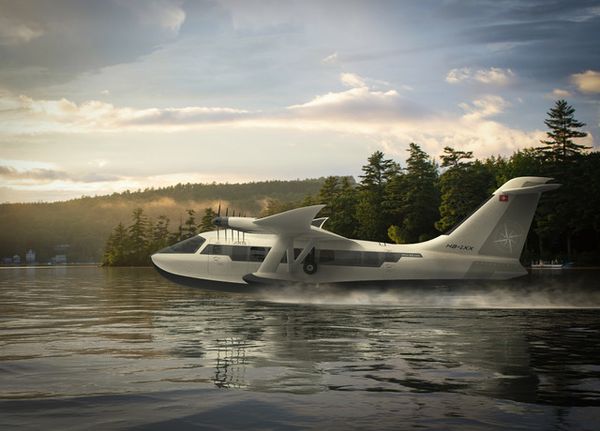Korean Air plans to use the Airbus A380 on its service from Seoul-Incheon International Airport (ICN) to Hong Kong International Airport (HKG) starting in October. Korean Air's future schedule reveals that the airline plans to operate 28 direct A380 flights between the two destinations. This represents a total of 11,396 seats on all routes combined.
The return of the A380 on the route suggests that travel demand in East Asia is rebounding from the COVID-19 pandemic. Nonstop flights between Seoul and Hong Kong are also offered by Asiana Airlines, Cathay Pacific, Greater Bay Airlines, HK Express, Hong Kong Airlines, and T'way Air.

Korean Air currently uses the A380 on four routes. The routes fly from Seoul-Incheon to John F. Kennedy International Airport (JFK), Los Angeles International Airport (LAX), and Taipei-Taoyuan International Airport (TPE).
Korean Air plans to operate two daily flights between Seoul and Hong Kong in October. The morning flight will use the Airbus A330-300 while the evening flight will use the A380.
For the A380 service, Korean Air flight KE177 will depart from Seoul at 7:45 p.m. Korea Standard Time (KST) and arrive in Hong Kong at 10:30 p.m. Hong Kong Time (HKT). Flight KE178 leaves Hong Kong at 12:45 a.m. HKT and arrives in Seoul at 5:25 a.m. KST.

Korean Air plans to offer the same number of flights to Hong Kong in October as to Taipei. Meanwhile, the airline will provide 31 flights to New York-JFK and 34 to Los Angeles during the same time period. This is equivalent to 12,617 seats and 13,838 seats in each direction, respectively.
All of Korean Air's A380 flights combined represent 98,494 seats for passengers flying to and from Seoul. The airline will have 242 round-trip flights once the A380 service to Hong Kong returns. Seat capacity is expected to grow further as travel demand returns to pre-pandemic levels.
Many airlines dropped the A380 during the pandemic due to weak passenger demand. However, many airlines are now returning to the A380 service to serve an increasing number of passengers. The airlines that operate the A380 include Emirates, Qantas, and Lufthansa.

Even though overall passenger capacity on international flights has rebounded, capacity in the Asia-Pacific region is still significantly below pre-pandemic levels. As of July 2023, seat capacity on flights from Europe to Asia and from the U.S. to Asia is 20% and 40% below pre-pandemic levels, respectively.
One reason for lower seat capacity in the Asia-Pacific is that China's aviation market currently has 50% less seat capacity than pre-pandemic levels. China serves as a large source of tourists for Asian destinations such as Japan, South Korea, and Thailand. This means that weak travel demand from Chinese tourists causes other Asian countries to reduce their seat capacity due to low demand.
However, travel demand and seat capacity are expected to increase in the coming months. Recent data shows that seat capacity on international flights departing from China will increase by 75% in the third quarter of this year compared to the second quarter. The increase will be driven by a 9% increase in seat capacity on flights between the U.S. and the Asia-Pacific region in July and August.
Air Canada Rouge to Launch Boeing 737 MAX 8 Operations » Alaska Airlines Defends Home Turf with 7 Strategic New Routes for 2026 » EASA Mandates Airbus A320 Fuselage Inspections »
Comments (0)
Add Your Comment
SHARE
TAGS
NEWS South Korea Korean Air Airbus A380 Seoul ICN LAX JFK Taipei TPERECENTLY PUBLISHED
 The Runway is Obsolete: Jekta Swiss is Resurrecting the Flying Boat for the 21st Century
AeroXplorer sat down with George Alafinov, CEO & Co-founder of Jekta Swiss. In conversation, he discussed the company's unique value proposition and how he sees his aircraft revolutionizing the amphibious aircraft industry.
STORIES
READ MORE »
The Runway is Obsolete: Jekta Swiss is Resurrecting the Flying Boat for the 21st Century
AeroXplorer sat down with George Alafinov, CEO & Co-founder of Jekta Swiss. In conversation, he discussed the company's unique value proposition and how he sees his aircraft revolutionizing the amphibious aircraft industry.
STORIES
READ MORE »
 Why Fast Price Estimation Has Become Critical for Brokers and Clients
In today's private aviation market, speed is no longer a "nice to have." It's an expectation. Brokers, operators, and clients all work under tighter timelines, higher price sensitivity, and far less tolerance for vague answers. When someone asks, "How much will this flight cost?" they don’t want a rough guess tomorrow; they want a credible answer now.
INFORMATIONAL
READ MORE »
Why Fast Price Estimation Has Become Critical for Brokers and Clients
In today's private aviation market, speed is no longer a "nice to have." It's an expectation. Brokers, operators, and clients all work under tighter timelines, higher price sensitivity, and far less tolerance for vague answers. When someone asks, "How much will this flight cost?" they don’t want a rough guess tomorrow; they want a credible answer now.
INFORMATIONAL
READ MORE »
 The Top 5 Longest Flights in the World
Technology continues to transform the way we live, work, and connect. Few industries embody this more than air travel, which has effectively shrunk the world in recent years. Journeys that would have once seemed impossible can now be completed in mere hours. Here's a look at the World's Top 5 flights, ranked by distance.
INFORMATIONAL
READ MORE »
The Top 5 Longest Flights in the World
Technology continues to transform the way we live, work, and connect. Few industries embody this more than air travel, which has effectively shrunk the world in recent years. Journeys that would have once seemed impossible can now be completed in mere hours. Here's a look at the World's Top 5 flights, ranked by distance.
INFORMATIONAL
READ MORE »



